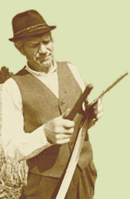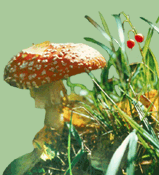Solar energy has future in Estonia
Jüri Krustok and Enn Mellikov look for opportunities of how to make more and more efficient use of everyday sunlight in solving the problems of energy supply. The article gives an overview of the essence of solar energy and its use in different parts of the world. Currently, photovoltaic electricity contributes for 0.01% of the world electricity need, while the objective for 2040 is 10%. In Estonia, solar energy is mostly used for warming up water in warm periods, while there is almost no records of photovoltaic electricity in Estonian Development Plan for Electricity production. Photovoltaic electricity is still expensive. The authors also explain how photovoltaic electricity is produced and which technologies are being studied in Estonia.
Wind cannot compete with speed-boats
Tarmo Soomere discusses the genesis, distribution and possible impacts of waves caused by regular ships and speed-boats. The critical speed of ships depends on the depth of the waterbody. In the Gulf of Finland in the depth of 100 m, the critical speed is 30 m/sec, or little over 100 km/h. But many coastal areas of the gulf are only 5 m deep, and the ships should slow down in these areas, since the waves caused by them are acting as mini-tsunamis. The detailed article gives a thorough explanation of the physical features of waves and their genesis.
Tree of the Year: Willow in Estonian folk culture
Kristel Rattus and Liisi Jääts describe the folk knowledge related to the use of willow, especially its bark and osiers. Osiers were used in construction works and in replacing twines and ropes. The main use of osiers was for basket-weaving. It was considered an easy job, right for children and elderly people. The bark was first and foremost used for making fifes. The bark was also used in leather dressing for making shoes. This process is more closely discussed.
Moments from the Green Week of the European capital
Toomas Jüriado shares his somewhat contradictory impressions from the Green Week of the European Council in Brussels: did it really complement to the protection of biological diversity? The theme of the week was named Biodiversity is life. The loss of species is almost unnoticable, and undoable, so it is really an issue worth international attention. At the same time, the amount of papers produced and shared during the week made the author wonder: what is real and what is apparent environmentalism?
Estonian Nature enquires
Olavi Tammemäe explains the tasks of environmental officer.
Heldur Sander writes about systematics of larches growing in Estonia.
Järvselja nature protection area
Anu Jürgenson and Rene Volt introduce one of our oldest and best-known forest protection area, the area of which increased by 10 times this year. The heart of the protected area a piece of primeval forest has been maintained unmanaged for over 80 years. The rest of the territory encompasses different Natura 2000 habitat types, such as old natural forests and old deciduous forests.
European rarities in Estonia: Ortolan Bunting
Jaanus Elts gives an overview of the bird who prefers open, managed, diverse agricultural landscapes. In Estonia its area of distribution lies mostly in North- and West-Estonia. The numbers of Ortolan Bunting are dropping foremost because of the loss of tree rows between the fields and the practice to cultivate same plants on large field areas.
Interview: Fungi are more exciting than fiction
Toomas Kukk has interviewed Bellis Kullmann, a mycologist.
Practical tips: species potential and real habitats on estimated maps.
Kalle Remm gives advice on how to map the potential habitats of rare species, based on the fully determined real habitats. There are two basic methods for compiling these maps: 1) basing on the likelihood of the species presence in the area and 2) according to criteria that have to be met for the specific habitat. In the Institute of Geograaphy, University of Tartu, maps of estimated habitats have been compiled for 7 orchid species in the Elva Town area.
The orchids of Pine Town
Liina Remm has followed the advice provided in the previous article and has mapped the orchids growing around the town of Elva. Since the town area includes several lakes and wetlands, they provide suitable habitats for many orchid species. Based on estimated maps, the potential habitats and specific habitats are easier to find. The author describes the orchid fauna in and around Elva.
Hiking trail: In Kütiorg, surrounded by nature and art
Leelo Laurits, the hostess of the Kütioru Open Studio, takes the reader to a unique hiking trail in the middle of nature and art. The Kütiorg Valley does not have a classical hiking trail yet, but the first aquintance with the Estonian largest primeval valley can be made along the art track. The trail is 3.4 km long, but physically rather complicated with height differences exceeding 70 m. Along the trail there are 14 land art objects: installations and sculptural forms. The article explains these installations with the authors own words.
Crumbling cumins
Urmas Kokassaar draws our attention to naturally distributed valuable relish herb and medical herb with wide options of use. The best known are the cumin seeds, that have been long and widely used in our cuisine, mostly in rye bread, but also to add taste to sourcraut, cabbage, curd cheese, soups, meat and vegetables.
Three summers with small owls
Sven Zaèek shares his interesting observations of the family life and everyday food-search of Long-Eared Owls during three summers.
| 

![[IN ENGLISH]](images/gb.gif)






